
A toshiyori (年寄) is a sumo elder of the Japan Sumo Association (JSA). Also known as oyakata (親方), former wrestlers who reached a sufficiently high rank are the only people eligible. The benefits are considerable, as only toshiyori are allowed to run and coach in sumo stables, known as heya, and they are also the only former wrestlers given retirement pay.

Takasago stable is a stable of sumo wrestlers, one of the Takasago group of stables. It is correctly written in Japanese as "髙砂部屋", but the first of these kanji is rare, and is more commonly written as "高砂部屋".

Kokonoe stable is a stable of sumo wrestlers, one of the Takasago group of stables. It was formed in 1967 and until 2021 was located in Ishiwara, Sumida, Tokyo. As of January 2023 it had 26 sumo wrestlers, four of whom are of sekitori rank. It is the most successful stable in terms of total yūshō won by its wrestlers, with 52.
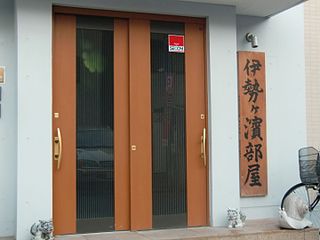
Isegahama stable, formerly known as Ajigawa stable from 1979 to 2007, is a stable of sumo wrestlers, part of the Isegahama ichimon or group of stables. Its current head coach is former yokozuna Asahifuji.

Takanohana stable was a stable of sumo wrestlers, created in 2004 when Takanohana Kōji took over the running of Futagoyama stable from his father Takanohana Kenshi. Formerly of the Nishonoseki ichimon or group of stables, it became the leader of a breakaway Takanohana group in 2010, which was formally recognized as an ichimon in 2014. It is one of the most successful sumo stables with 42 top division championships to its name, won by eight different wrestlers, if Futagoyama's history from 1962 is included. As of the September 2018 tournament the stable had eight wrestlers, including three sekitori. Takanohana resigned from the Japan Sumo Association shortly after that tournament and the stable was absorbed into Chiganoura stable on October 1, 2018.

Tosanoumi Toshio, is a former sumo wrestler. He first reached the top division of professional sumo in 1995, winning 13 special prizes and earning 11 kinboshi or gold stars for defeating yokozuna over his long career. The highest rank he reached was sekiwake. He retired in 2010 to become a coach at his stable, Isenoumi stable under the name of Tatekawa.

Wakanosato Shinobu is a retired sumo wrestler from Hirosaki, Aomori, Japan. He made his debut in the top division in 1998, and his highest rank was sekiwake. He holds the record for the most consecutive tournaments ranked in the junior san'yaku ranks of sekiwake and komusubi. He won ten special prizes and was twice runner-up in a tournament. He earned two gold stars for defeating yokozuna at a maegashira rank. He had 1691 career bouts, sixth on the all-time list. He retired in 2015 and was a coach at Tagonoura stable, until opening his own Nishiiwa stable in February 2018.

Takekaze Akira is a former professional sumo wrestler from Akita Prefecture, Japan. A former amateur sumo champion, he turned professional in 2002, reaching the top makuuchi division the following year. He was a runner-up in one tournament, earned two special prizes for Fighting Spirit, and one gold star for defeating a yokozuna. Takekaze is in first place for the slowest promotion from makuuchi debut to the third highest sekiwake rank in history. Aged 35 years and two months, he is in first place for the eldest to make his sekiwake debut post World War II. He was a member of Oguruma stable. He retired in January 2019 to become an elder of the Japan Sumo Association under the name Oshiogawa-oyakata.

Yoshikaze Masatsugu is a former sumo wrestler from Saiki, Oita Prefecture, Japan. His highest rank was sekiwake. A former amateur sumo champion, he turned professional in 2004, reaching the top division two years later. Until his promotion to komusubi in May 2014 he had the active record for the longest serving makuuchi wrestler who had never reached a titled rank. His best performance in a tournament came in July 2015 when he was the runner-up and scored twelve wins against three losses. In the following tournament in September 2015 he defeated two yokozuna and won special prizes for Outstanding Performance and Technique. Yoshikaze is in second place for the slowest promotion from makuuchi debut to the third highest sekiwake rank in history, behind only his stablemate Takekaze. He won ten special prizes in total, and eight gold stars for defeating yokozuna. He retired in September 2019 and is now an elder of the Japan Sumo Association, known as Nakamura Oyakata.
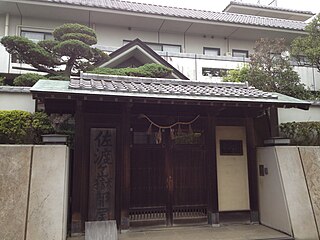
Sadogatake stable is a stable of sumo wrestlers, one of the Nishonoseki group of stables. In its modern form, it dates from September 1955, when it was set up by former komusubi Kotonishiki Noboru. Former yokozuna Kotozakura took over the running of the stable in 1974 following Kotonishiki's death. The stable is located in Matsudo, Chiba prefecture. Over the next thirty years the stable produced a string of top division wrestlers. Kotozakura stood down in November 2005, handing the stable over to his son-in-law, former sekiwake Kotonowaka.
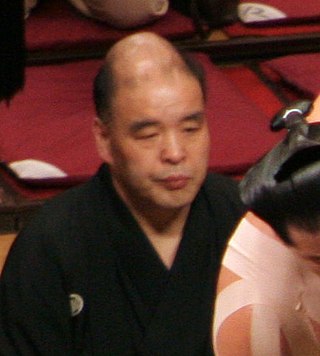
Daiju Hisateru is a former sumo wrestler from Hokkaidō, Japan. His highest rank was ōzeki, but he held the rank for only five tournaments, fewer than any ōzeki in the modern era. He won eleven sanshō or special prizes during his top division career which lasted from 1970 to 1977. He was the head coach of Asahiyama stable from 1997 until 2015.
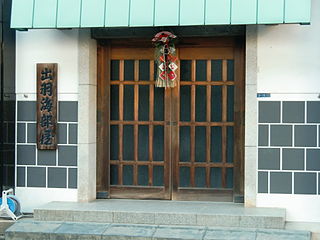
Dewanoumi stable is a stable of sumo wrestlers, part of the Dewanoumi ichimon or group of stables. It has a long, prestigious history. Its current head coach is former maegashira Oginohana. As of January 2023 it had 19 wrestlers.

Miyagino stable is a stable of sumo wrestlers, part of the Isegahama ichimon or group of stables. It was founded by the 43rd yokozuna Yoshibayama as Yoshibayama dōjō while he was still an active wrestler, before changing to its current name in 1960. As of January 2023, the stable had 20 wrestlers, with two of them ranked in the second highest professional division.

Kasugano stable is a stable of sumo wrestlers, part of the Dewanoumi ichimon or group of stables. As of January 2023 it had 17 wrestlers. It has been led by former sekiwake Tochinowaka Kiyotaka since 2003. It was one of the most successful stables in 2013, with six sekitori wrestlers, including now retired Georgian Tochinoshin and Japanese born Tochinowaka Michihiro, who used the current head coach's old ring name.

Sakaigawa stable is a stable of sumo wrestlers, part of the Dewanoumi group of stables. It was established in its modern form on 25 May 1998 by former komusubi Ryōgoku Kajinosuke IV, who branched off from Dewanoumi stable. It was originally called Nakadachi stable, but when Sakaigawa-oyakata reached the Japan Sumo Association's mandatory retirement age in February 2003, he passed on the Sakaigawa name, and the stable was renamed. As of January 2023, it had 19 wrestlers, with four of them ranked in the two top professional divisions.
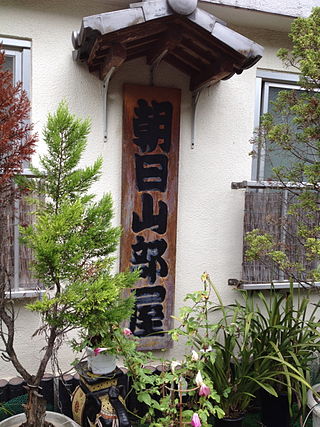
Asahiyama stable was a stable of sumo wrestlers, part of the Isegahama ichimon or group of stables. It had a long history. It closed its doors in January 2015, and its staff and wrestlers transferred to other stables.
The following are the events in professional sumo during 2012.
Takashima stable, formerly known as Kumagatani stable from January 1960 to May 1961, was a stable of sumo wrestlers, part of the Tatsunami ichimon or group of stables. Its head coach was former Ozeki Mitsuneyama. It closed in 1982 with all wrestlers and personnel transferring to the new Kumagatani stable.

Nishonoseki stable is a stable of sumo wrestlers, one of the Nishonoseki group of stables. It broke off from Tagonoura stable by its founder, the 72nd yokozuna Kisenosato, and officially opened in August 2021 as Araiso stable. The name of the stable changed in January 2022 after the Japan Sumo Association approved the changing of Kisenosato's toshiyori from Araiso to Nishonoseki, following the retirement of former ōzeki Wakashimazu.

Oshiogawa stable is a stable of sumo wrestlers, one of the Nishonoseki group of stables. It broke off from Oguruma stable by its founder, former sekiwake Takekaze, and officially opened in February 2022. The planned opening of the stable was first announced in April 2021, and was prompted by the imminent retirement of the head of Oguruma stable, former ōzeki Kotokaze, who turned 65 years of age in April 2022. As of January 2023 it had six wrestlers.


















